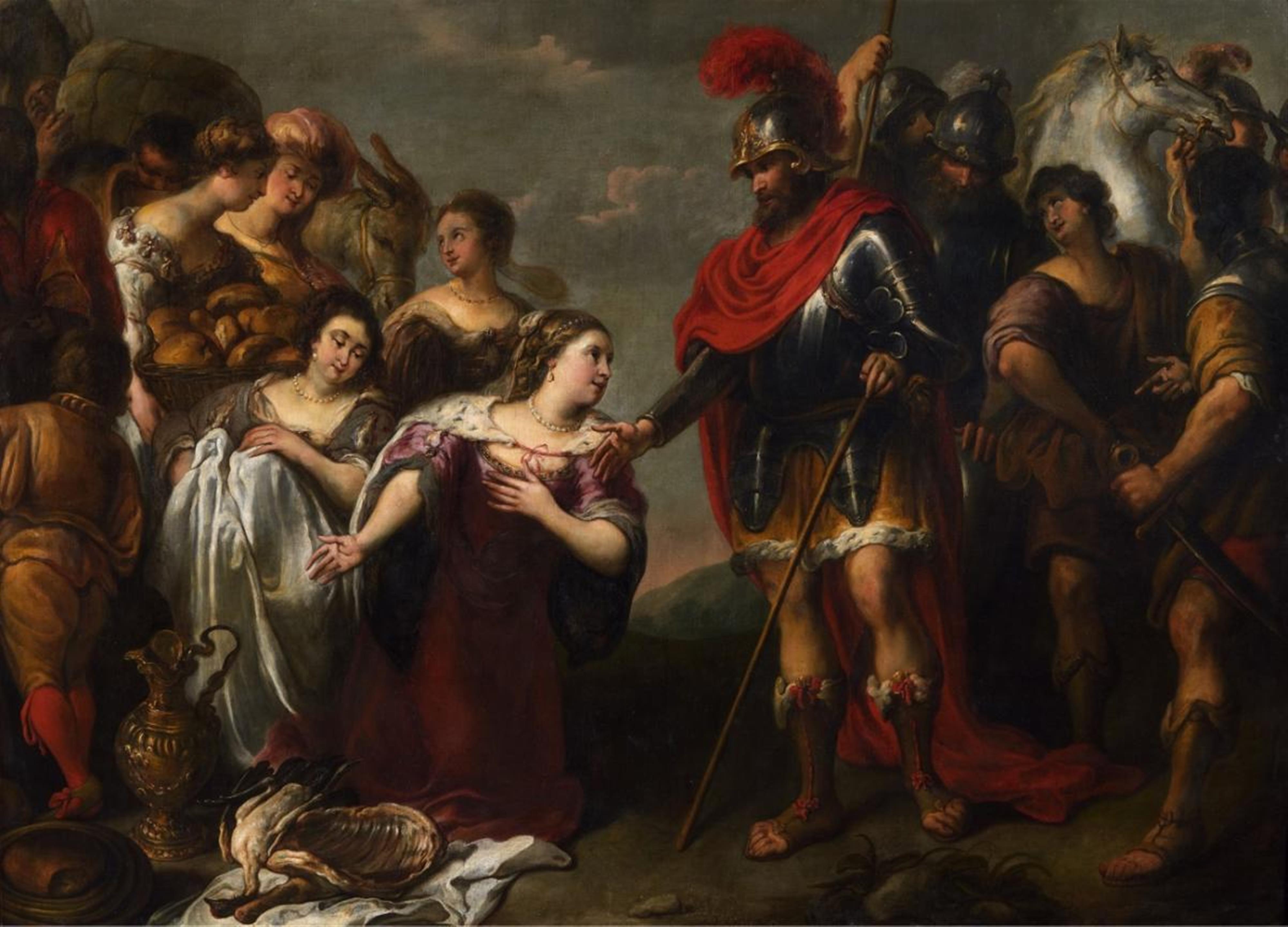Jan Cossiers
DAVID UND ABIGAIL
Oil on canvas (relined). 226 x 164 cm.
J. Cossiers.
Jan Cossiers was an important figure of the Antwerp school of the 17th century. After his apprenticeship with Cornelis de Vos he went to Aix-en-Provence in 1623-24 and then to Italy. Later he returned to Antwerp, where he became a member of the Lucas guild in 1628, becoming its dean in 1639 and 1640. Cossiers was a respected painter, who was quite succesfull in his hometown. In Rome Cossiers developped a Caravagesk style of his own wich can be seen in his works of the 1620s. In Antwerp he came under the influence of Rubens.
The present painting is a recent discovery and therefore an addition to the catalogue raisonné of the painter. The composition depicts a scene from the Old Testament about David and Abigail (I Samuel, 25, 17-25). David - not yet anointed as King of Israel, but known for his famous victory over the giant Goliath - with his servants protects the shepherds of a wealthy man, Nabal, from Kaleb. When Nabal refuses to pay for these services, David considers how to obtain this by force. Nabal's wife Abigail recognises her husband's mistake and decides to solve the conflict: "Abigail hurried to take two hundred loaves of bread and two pitchers of wine and five prepared sheep and five bushels of flour and one hundred raisin loaves and two hundred fig cakes and loaded them onto donkeys... When Abigail saw David, she quickly descended from the donkey and fell with her face down before David and bent close to the earth" (I Samuel, 25, 18-19, 23-24). Our painting is closely related to Rubens' interpretation of the same subject from the years 1625/28 (Detroit Institute of Arts). The composition is also reminiscent of Rubens' painting "Jacob and Esau" from the 1620s (Schloss Schleissheim). It is known that Cossiers in later years made use of the themes and compositions of early Rubens works. The colouring, however, is different, it is darker, a more serious scale of colours, accentuated by grey, black and ochre tones.
We thank Prof. Hans Vlieghe for his assistance in the cataloging of this painting.
Provenance
Private collection, Belgium.




